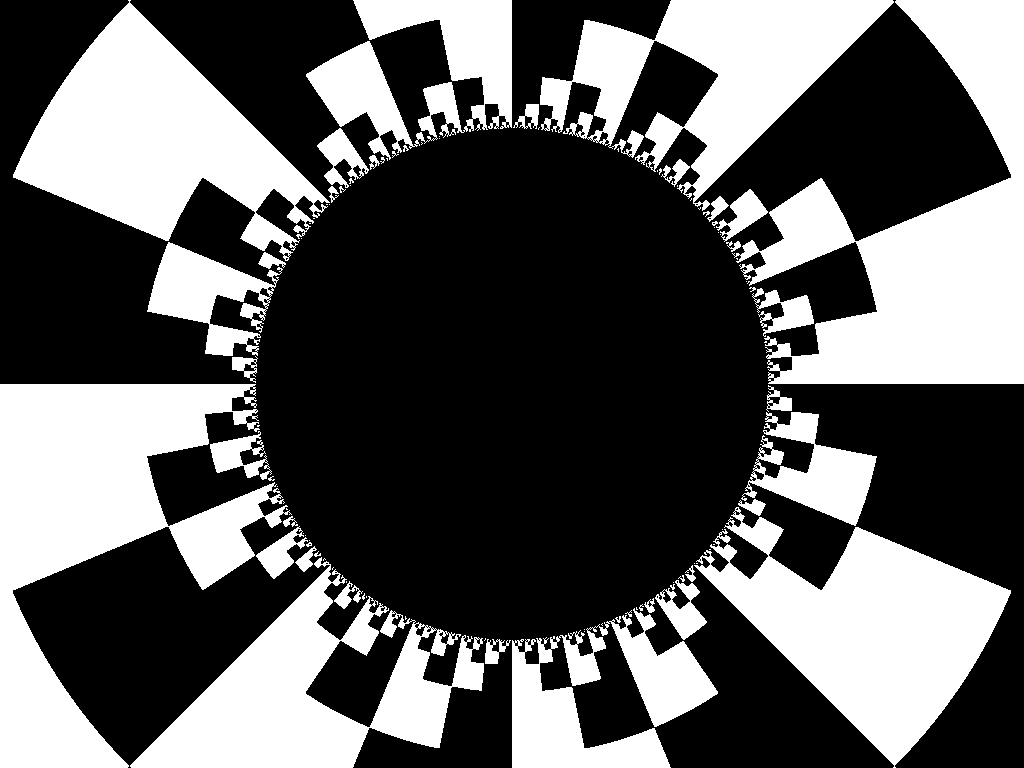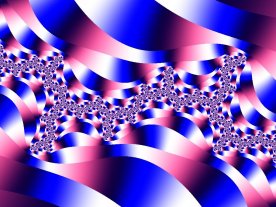|
III. Escape Angle The formulas discussed so far have only considered the magnitude of z and the iteration count. If we think of the magnitude of z as one part of the polar coordinates of z, then it becomes natural to consider the other part - the angle of z-for coloring. The escape angle family of algorithms covers those algorithms based on the angle of zn. The first algorithm here is binary decomposition. With this algorithm, zn with angles above the real axis are given one color, and zn with angles below the real axis are given another. This is of course a fundamentally discrete algorithm, but it provides a visual approximation to the binary form of the field lines surrounding the fractal. While this can provide some valuable insights into the structure of fractals, it is not so often used in artistic fractal images. Variations on the binary decomposition scheme increase the number of divisions of the plane. For example, quaternary decomposition would assign a separate color to each quadrant, with zn angles in each quadrant producing the corresponding color. Increasing the number of divisions allows more colors to be used. Of course, these are all discrete methods; with continuous decomposition, the angle is read directly and used as a continuous position along the color gradient.  
Figs. 3a, 3b. Binary decomposition and continuous decomposition of two different Julia sets.
VisMath Home |